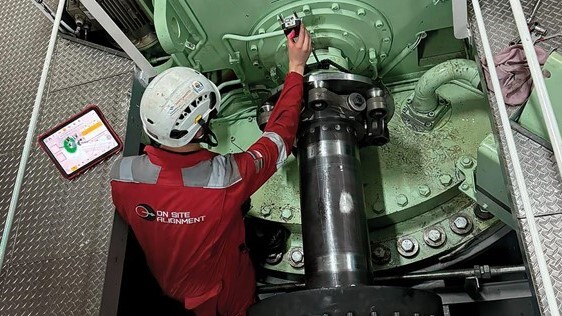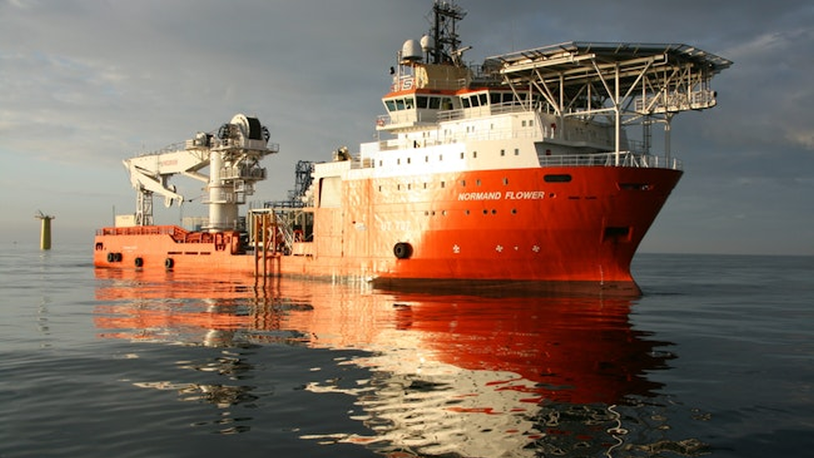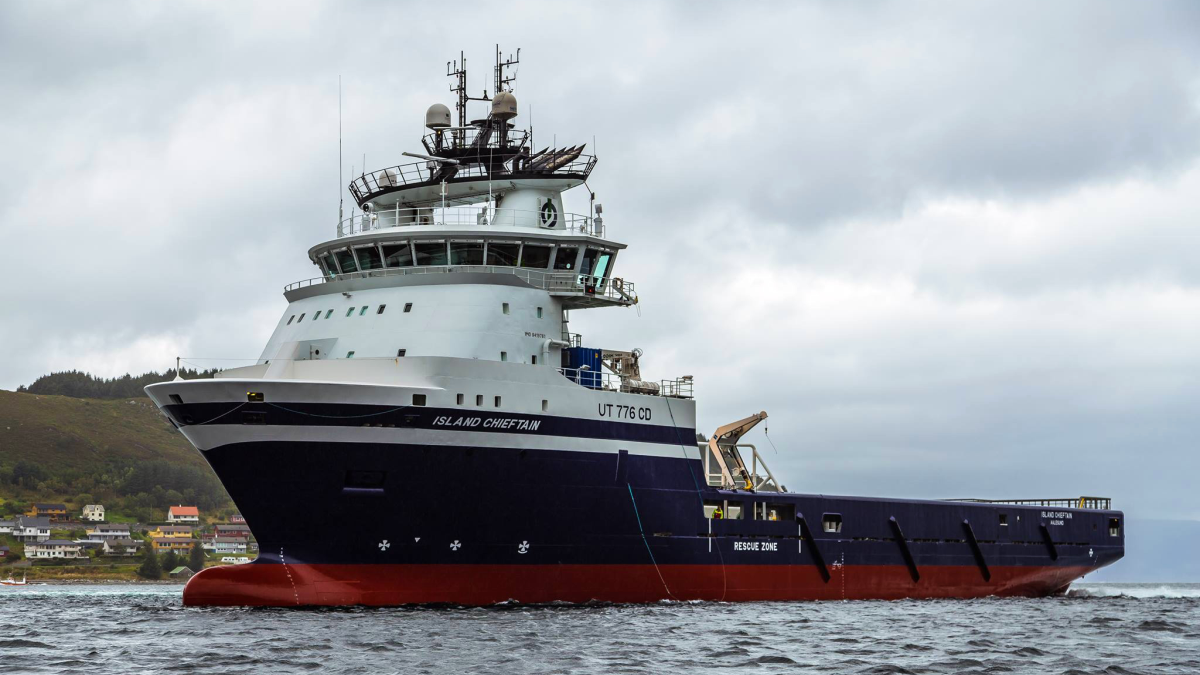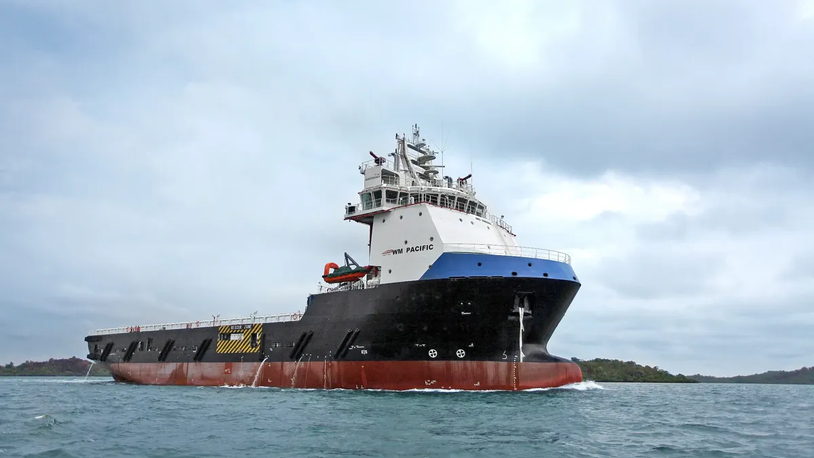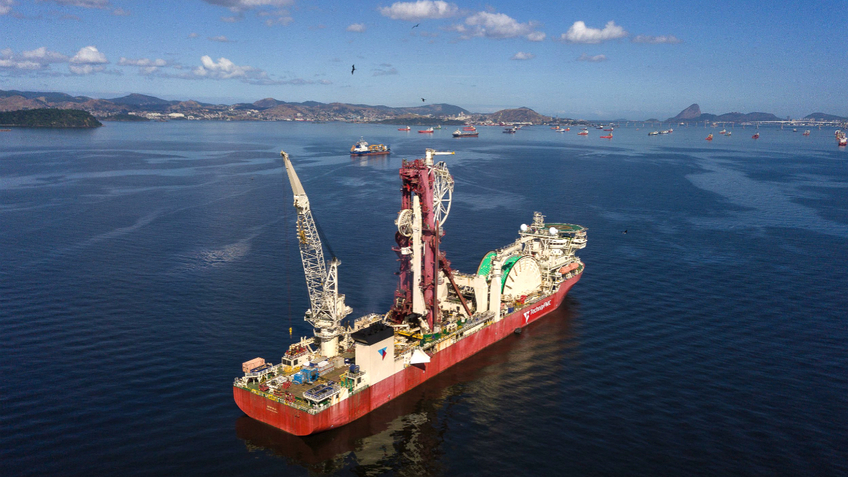Business Sectors
Events
Contents
Anchor handler is designed to be clean, safe and powerful
In response to market trends, including deeper drilling and greater FPSO requirements, Havila Shipping is making a substantial investment in top end anchor handlers. Havila Mars, recently delivered by Havyard Leirvik, is an indication of the strategic direction that this company is taking
Norway’s Havila Shipping has recently taken delivery of a new multi-functional anchor handling tug and supply services (AHTS) vessel, Havila Mars. This Rolls-Royce UT786 CD type, built at the Havyard shipyard in Leirvik, Norway, incorporates a number of features intended to reduce the ship’s environmental impact and enhance operational safety on board. At 18,200hp, she is also one of the most powerful anchor handlers on the market today.
Developed by UT-Design, the UT786 CD class anchor handler has an overall length of 86m, a beam of 19.90m and a bollard pull of approximately 210 tonnes when the swing-up azimuth bow thruster is contributing, or around 190 tonnes on the main propellers only. Havila Mars is designed to handle anchors and mooring lines in deep water down to 1,500-2,000m. In addition, the ship is equipped for firefighting, rescue, oil recovery and ROV operations.
The low resistance hull form has been optimised to achieve low fuel consumption and to allow for a maximum speed of approximately 18 knots, and an economic transit speed of 12-15 knots. Also key to this level of performance is the propulsion package, which includes two environmentally-friendly Bergen Diesel BV32:40V12P main engines, each rated at 6,000kW. Havila Mars has been built to achieve DNV’s environmentally conscious Clean Design class notation, and Bergen’s recently introduced engine type is critical to the vessel’s ability to demonstrate the required level of environmental impact.
Significantly, the new ship is also equipped with catalysers (from DEC Marine, formerly Munters) to reduce NOx emissions to very low levels. This is to some extent a direct response to new legislation in Norway, which came into effect in January this year and which levies a charge of NKr15/kg on NOx emissions, a rate that is due to rise further to NKr 50/kg in 2010. The new catalytic system is said to cut emissions by between 75 and 90 per cent.
As Havila chief executive officer, Njaal Saevik, pointed out: “This technology is a major advantage for charterers, since it will cut costs quite dramatically compared with earlier generation vessels.” The catalysers are relatively new technology for anchor handlers, and this is only the second vessel in the Havila fleet to have such as system onboard. However, almost all the company’s newbuildings will in future be fitted with NOx reducers.
The lower fuel consumption is another environmentally beneficial attribute of Havila Mars. In fully loaded condition she is capable of an economical 57.9 tonnes a day, although the most economical speed when fully loaded is 12 knots, at which performance fuel consumption is 22.7 tonnes a day.
The main Bergen diesel engines turn twin CP propellers, 4,100mm in diameter, and manoeuvring is enhanced by a 1,500kW azimuth bow thruster and a 883kW tunnel bow thruster. In addition, there are twin tunnel stern thrusters, each rated at 736kW.
The UT786 CD design offers a number of other advantages, including a safety conscious anchor handling deck, good under deck capabilities, a large 400tonne capacity main winch and the capability to support ROV operations if required.
A key focus of the design has been to ensure high quality anchor handling capabilities in demanding offshore environments, and Havila Mars is described as being ‘robust enough to carry out safe anchor handling in all water depths’. Crew safety during anchor handling operations has been given top priority and every effort made to allow the crew to be kept away from potentially dangerous areas. This is achieved through installation of the recently introduced Rolls-Royce Safe Deck equipment system. Havila Mars is only the second vessel, after Olympic Octopus, to be fitted with this.
At the heart of the new Safer Deck Operations arrangement is a pair of rail-mounted double boom cranes that can run along the full length of the deck. The hoisting boom is fitted with a winch and is able to move equipment to and from any point on the deck. The cranes can also reach out over the stern to capture anchor buoys and can be used to catch PCP wires, using special hydraulically operated tools.
These tools are described by Rolls-Royce as being like mechanical ‘hands’, that can work in conjunction with new towing pins, shark jaws and centring devices that have been developed by Rolls-Royce’s Rauma Brattvaag division. These ‘hands’ can be remote-controlled wirelessly by a crew member, so that key tasks can be undertaken while he remains in a safe place on the deck, away from any potential danger.
When the vessel is not in anchor handling mode, the spacious 660m2 deck area and under deck capacities allow a wide range of other offshore tasks to be performed. In total, the deck load capacity is 1,200 tonnes, and the deck strength is around 10 tonnes/m2.
Below deck, total tank capacity is 5,765m3, and this includes fuel oil tank capacity of 930m3, 1,170m3 of potable water, 3,355m3 of ballast water, 695m3 of mud, 1,023m3 of brine and 271m3 of special products. There are also four vertical tanks for dry bulk products with a combined capacity of around 235m3.
The mooring and deck equipment on board includes two 15 tonne deepwater winches, two 3,780kg anchors, two 24 tonne and one 20 tonne tugger winch forward and two 12 tonne hydraulic tugger winches/capstans aft. In addition, there is a deck crane with a 15 tonne capacity at 15m radius located to starboard.
Anchor handling capability is provided through a 400 tonne capacity towing drum, with a 400 tonne pull, 550 tonne brake capacity, and storage for 2,759m of 84mm wire. In addition, Havila Mars has two AHT drums, also rated at 400 tonne pull capacity, one of which is designed to take 5,000m of 84 mm wire, while the other can accommodate 1,732m of 8mm wire. Also on board are two 550 tonne stern rollers, and two anchor handling tongs rated at 650 tonnes.
Havila Mars conforms to DYNPOS-AUTR standards, meeting IMO DP2 requirements, and is equipped with two Kongsberg SDP21 DP units. Furuno has supplied much of the navigation package, including radar, gyro compass, GPS, speed log and echo sounder systems.
Accommodation is provided for 33 persons, including seven single cabins and 13 two man cabins. Havila Mars is also reportedly the first AHTS to be equipped with a ‘sky lobby’ for the crew, which offers them a recreation area with full visibility forward and aft.
Havila Mars is clearly a powerful deepwater anchor handler that also has full supply capability and excellent standby rescue capacity. Christened in Bergen on May 19, she has been chartered to Statoil for a three year period, with an option for a further three years. A sister, Havila Mercury, is due for delivery towards the end of September.
Havila Mars and Havila Mercury were developed in response to a challenge issued by Statoil to the offshore sector in 2003, calling for solutions which would reduce manual labour in anchor handling and so enhance safety. “This challenge was accepted by the industry,” says Terje Overvik, executive vice president at Statoil. ”The ships we are now chartering incorporate pioneering technology which enhances safe working as well as substantially reducing nitrogen oxide emissions.”
For Havila, the new anchor handler is an important step forward for the company, and reflects a strategic decision to enter the market for modern large anchor handlers. “This is a relatively new market for us,“ said Mr Saevik, ”but we believe there are real opportunities for this type of vessel which combines new technology with large anchor handling capabilities in deep water and a very high degree of safety.”
The new arrival is one of 10 new offshore support vessels that Havila has on order at European yards for delivery through to 2010. In addition, a joint venture with a Singaporean firm has six vessels under construction in China. All but two of these newbuildings will be anchor handlers, and most will have capacities at the high end of the market. OSJ
Related to this Story
Events
Maritime Environmental Protection Webinar Week
Cyber & Vessel Security Webinar Week
The illusion of safety: what we're getting wrong about crews, tech, and fatigue
Responsible Ship Recycling Forum 2025
© 2024 Riviera Maritime Media Ltd.

